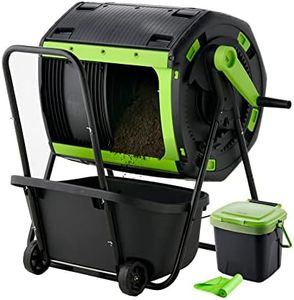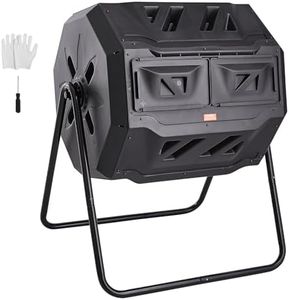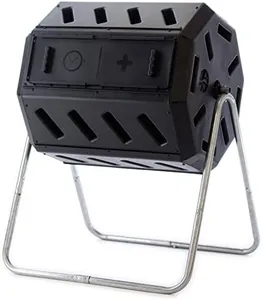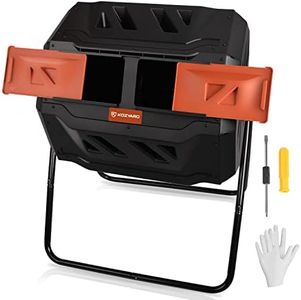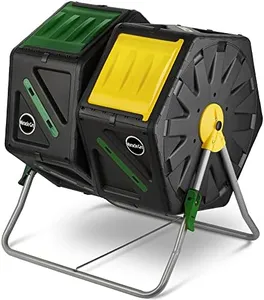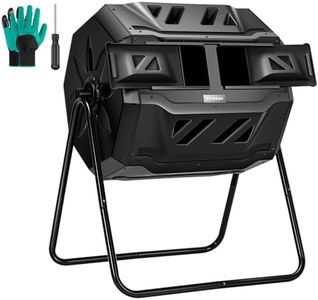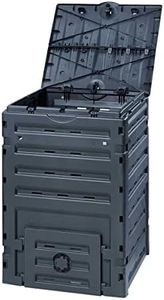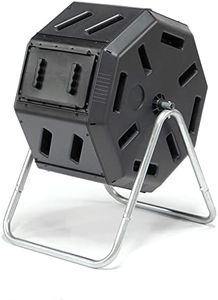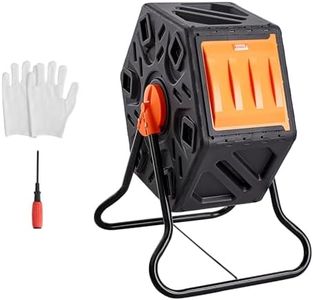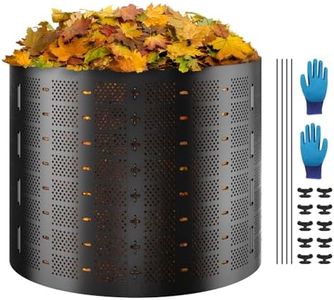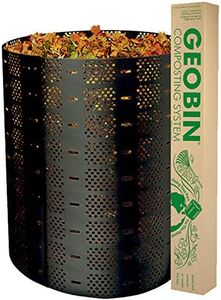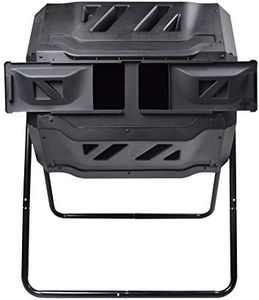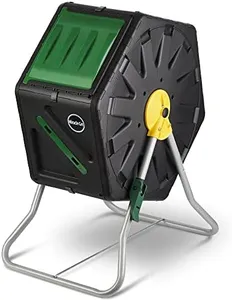We Use CookiesWe use cookies to enhance the security, performance,
functionality and for analytical and promotional activities. By continuing to browse this site you
are agreeing to our privacy policy
10 Best Compost Bins Tumblers
From leading brands and best sellers available on the web.Buying Guide for the Best Compost Bins Tumblers
Choosing the right compost bin or tumbler is about finding a solution that matches your space, lifestyle, and composting goals. Both compost bins and tumblers help you turn kitchen scraps and yard waste into rich soil, but they work a little differently and come in a range of designs. Before you pick one, think about how much waste you generate, the space you have available, and how much effort you want to put into turning your compost. A good fit will make composting easy, efficient, and even enjoyable.Capacity (Size)Capacity refers to how much compost material your bin or tumbler can hold at once, usually measured in gallons or liters. This is a crucial consideration because your household’s waste output will determine how much capacity you need. Small bins (under 50 gallons) are suitable for apartments or small gardens, handling kitchen scraps from a single person or couple. Medium sizes (50–100 gallons) work well for small to medium gardens or families. Large composters (over 100 gallons) are ideal if you have a big yard or several people generating waste. Choose a size that fits your usual load without overwhelming it—overfilling slows down composting, while too big a bin for your needs may slow the process because it stays half-empty.
MaterialCompost bins can be made from plastic, metal, or wood. The material affects durability, weight, insulation, and maintenance. Plastic bins are lightweight, weather-resistant, and low-maintenance, making them popular for most users. Metal is strong and durable, but may rust over time and get very hot or cold based on the weather. Wood bins look natural and insulate well but may need some upkeep to prevent rot. Your choice here depends on your climate, whether the appearance matters, and how much maintenance you’re willing to do.
Aeration and MixingAeration refers to how well air circulates inside the bin or tumbler, and mixing means how easy it is to turn the contents. Good aeration is essential for fast, odor-free composting because compost breaks down best with lots of oxygen. Tumblers are generally easier to turn and provide better aeration since they rotate, while stationary bins may require manual stirring with a tool. If you want a low-maintenance option and easier mixing, a tumbler is often the way to go. If you don’t mind some hands-on effort and want a larger capacity, a bin might be suitable.
Access and HarvestingAccess refers to how easily you can add material to the composter and remove the finished compost. Some bins have wide lids or doors, while tumblers may have smaller openings. Look for features that allow you to easily add scraps and take out compost without too much mess or effort. If you want frequent access to finished compost, a model with a simple, accessible hatch or bottom door can be more convenient. Think about how often you’ll harvest—and how easy you want it to be.
Pest and Odor ControlComposters can attract pests and create odors if not properly designed. Look for features like secure lids, tight seals, and proper ventilation to keep rodents and bugs away while preventing unpleasant smells. Tumblers are generally more pest-resistant since they’re elevated and closed. In contrast, open bins may need more frequent monitoring and balancing. If you’re concerned about wildlife or potential smells—especially in urban or shared spaces—choose a model designed for maximum odor and pest control.
